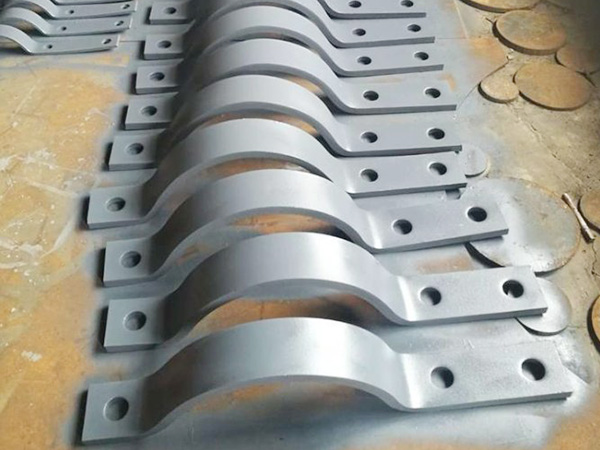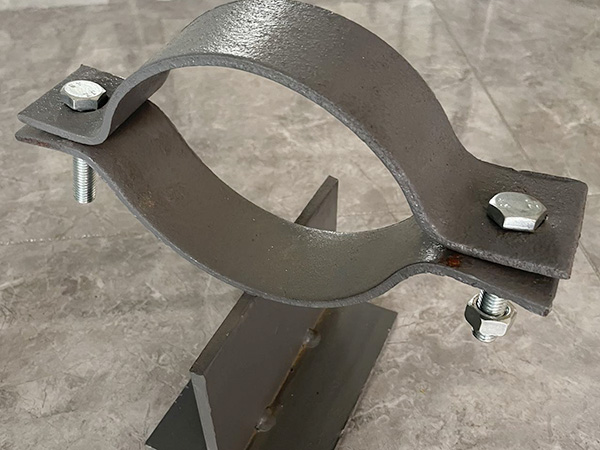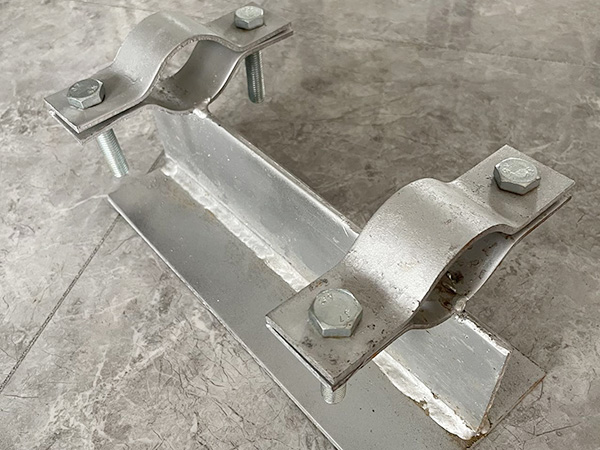Selection and Application of Insulated Pipe Supports: Practical Advice from Industry Experts
Author:Mingde Time:2025-07-18 17:54:13 Click:84
In industrial piping systems, insulated pipe supports are not only criticalstructural components but also key to ensuring the safety and stability of system operations. Especially in high-temperature, high-pressure, or geologically complex environments, the choice and application of supports directly impact the pipeline’s service life and energy efficiency. This article explores key considerations in material selection, structural design, thermal compensation mechanisms, and installation standards, providing practical insights based on industry practice and academic research.


1. Material Selection: Balancing Corrosion Resistance and Strength
Pipe supports are often exposed to moisture, high temperatures, and corrosive chemicals. Their materials must offer both mechanical performance and durability. According to international standards and best practices, common materials include:
1.Stainless Steel and Alloy Steel: For marine or chemical plant environments, 316L stainless steel is favored due to its excellent resistance to chloride corrosion. For instance, in a coastal nuclear power plant project, steam pipe supports made of 316L maintained a corrosion rate below 0.02 mm/year after 10 years—well below industry thresholds. For high-temperature applications, Inconel 625 can withstand temperatures up to 980°C and remains stable in sulfur-containing environments, making it suitable for catalytic cracking units in refineries.
2.Composite Materials: Glass Fiber Reinforced Plastic (GFRP) supports provide weight reduction benefits in certain low-load environments. However, their temperature and mechanical limitations (typically effective from -40°C to 120°C) restrict them to non-critical applications. In safety-sensitive or high-temperature scenarios, metallic pipe supports—such as stainless steel or alloy steel—remain the industry standard due to their superior load-bearing and thermal endurance.
3.Hot-Dip Galvanized Carbon Steel: Ordinary carbon steel supports can be hot-dip galvanized to form a 0.08 mm thick zinc layer, extending corrosion resistance to over 20 years. In one long-distance natural gas pipeline project, galvanized supports increased replacement intervals from 5 to 15 years.
2. Structural Design: Coordinating Rigidity and Flexibility
Support design must balance “rigid support” with “flexible compensation” to accommodate thermal expansion, seismic activity, and soil settlement.
1.Sliding and Guide Supports: On long straight pipeline sections, sliding supports with PTFE (polytetrafluoroethylene) pads reduce friction and allow axial movement. In a thermal pipeline network project, such supports reduced thermal expansion stress by 40%, preventing weld failures. Guide supports with articulated joints help release bending moments. At natural gas pipeline elbows, hinged supports extended elbow fatigue life from 5 to 20 years.
2.Constant Force Spring Supports: For vertical or long-span overhead pipelines, these supports offset pipe weight with spring preload, maintaining constant support force. In one catalytic cracking unit, vibration amplitude dropped from 5 mm to 0.5 mm, significantly extending equipment lifespan.
3.Extended Pipe Shoes: For overhead pipelines with thermal expansion exceeding 100 mm, extended pipe shoes prevent displacement beyond structural supports. After implementing extended shoes in a city heating system, support failure rates dropped by 70%.
3. Thermal Compensation Mechanisms: Smart Designs for Temperature Changes
Thermal stress is a major cause of support failure. High-performance supports should integrate thermal compensation to minimize the impact of expansion and contraction.
1.Bellows Expansion Joints: In high-temperature steam pipelines, these joints absorb axial movement through elastic deformation. In a power plant’s main steam line, their use reduced axial force from 120 kN to 30 kN, cutting support foundation size by 50%.
2.Natural Compensation: Designing pipelines with L- or Z-shaped segments can partially accommodate thermal movement through natural deflection, potentially reducing the number of mechanical joints required. However, in most industrial systems—especially those involving high temperature, long distances, or structural movement—precision-engineered supports and compensators remain essential to ensure performance and safety. In one city heating project, combining natural compensation with advanced supports optimized layout efficiency while maintaining system integrity.
3.Cold Spring Techniques: Pre-stretching or pre-compressing pipelines during installation offsets thermal stress during operation. A secondary circuit at a nuclear plant using this method saw a 70% reduction in stress amplitude and tripled fatigue life.


4. Installation Standards: Precision and Protection Are Critical
Support installation quality directly affects system stability. International standards (e.g., ASME B31.3) outline strict guidelines on support spacing, anchoring methods, and corrosion protection.
1.Support Spacing: Horizontal support spacing must follow the formula:
L ≤ 0.5√(EI/W)
Where E is elastic modulus, I is the moment of inertia, and W is pipe weight per unit length. For example, a DN500 carbon steel pipe at 200°C should have supports no more than 8 meters apart to avoid vibration.
2.Fixed Point Design: At directional changes or equipment connections, fixed supports prevent excess movement. In one chemical facility, missing fixed supports led to flange leakage and over 2 million CNY in repairs.
3.Corrosion-Resistant Installation: Contact areas between supports and pipes should have rust-proof coatings or insulating pads to avoid galvanic corrosion. In an offshore platform case, missing insulation caused support failure within 3 years, leading to pipeline collapse.
5. Industry Practice: Offshore Pipeline Support Optimization in the North Sea
The North Sea is a globally recognized deepwater oil and gas region. Its subsea pipelines face wave forces, seabed erosion, and soil settlement. A DN600 pipeline operated by a multinational oil company experienced settlement, vibration fatigue, and local scouring after 8 years. Optimization measures included:
1.Material Upgrade: High-strength alloy steel (ASTM A694 F65) replaced carbon steel, raising yield strength from 245 MPa to 485 MPa. Specialized insulation materials were applied at the base to prevent permafrost thaw. While temporary wood chip layers were used during early construction stages, long-term performance relied on engineered thermal insulation in conjunction with high-strength pipe supports.
2.Dynamic Compensation: In high-wave zones, constant force spring supports absorbed 90% of thermal displacement. Bellows expansion joints were added at key points to accommodate axial growth.
3.Seabed Stabilization: Geogrids were used on sensitive slopes to improve shear strength. A combination of sandbags and concrete covers reduced erosion from 0.15 m/year to 0.03 m/year.
Post-optimization, support settlement was limited to under 0.3 m, vibration amplitude fell below 0.1 m, and fatigue life increased from 5 to 15 years—substantially improving system reliability.
Conclusion
The selection and application of insulated pipe supports demand a comprehensive understanding of materials science, mechanical design, and engineering practice. By adopting corrosion-resistant materials, optimizing structural systems, integrating thermal compensation, and adhering to rigorous installation standards, industrial operators can significantly improve the stability and energy efficiency of pipeline systems. Looking forward, as intelligent monitoring technologies evolve, pipe supports will increasingly feature adaptive capabilities, offering even greater security for industrial infrastructure.
References
ASME B31.3 Process Piping Code
Li, Y. et al. (2019). “Development of Modular Pipe Supports with Improved Thermal Isolation for District Heating Networks.” Applied Thermal Engineering, 149: 1241–1249.
Zenkert, D. (1997). The Handbook of Sandwich Construction, Engineering Materials Advisory Services Ltd.
 Hot Products
Hot Products
 Contact Us
Contact Us
Contact:
Mobile:+86 +86 19133378808
Website:mingdepipe.com
Address:










